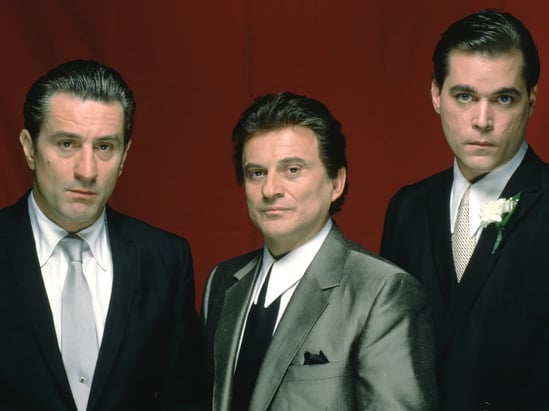The Goodfellas: A Gritty Symphony of Crime, Loyalty, and Betrayal
Cinemapedia
Martin Scorsese’s The Goodfellas (1990) is widely regarded as one of the greatest crime films ever made. Adapted from Nicholas Pileggi’s non-fiction book Wiseguy, the film is a raw and electrifying journey into the world of organized crime. With its masterful direction, unforgettable performances, and a profound exploration of morality and human ambition, The Goodfellas remains a cornerstone of cinematic excellence.
A Stylish Depiction of Crime
Scorsese’s visual storytelling in The Goodfellas is nothing short of brilliant. The cinematography by Michael Ballhaus captures the duality of the mobster lifestyle: the allure of luxury and power juxtaposed with the grim reality of violence and betrayal. One of the most iconic sequences is the long, unbroken tracking shot of Henry Hill (Ray Liotta) and Karen (Lorraine Bracco) entering the Copacabana nightclub through the back entrance. This shot exemplifies Scorsese’s ability to immerse viewers into the characters’ world, showcasing the seduction of the mob life in a single, fluid motion.
The film’s use of color and lighting is deliberate and evocative. Warm tones dominate scenes of wealth and camaraderie, while stark, cold lighting accentuates moments of tension and violence. Scorsese doesn’t shy away from depicting the brutality of mob life, with graphic depictions of murder and betrayal that remind viewers of the high stakes in this world.
The Rise and Fall of a Mobster
At the heart of The Goodfellas is the story of Henry Hill, a young man who grows up idolizing the mob and eventually becomes a part of it. The film chronicles his rise through the ranks, his involvement in criminal activities, and ultimately, his downfall. Scorsese structures the narrative with a fast-paced rhythm, seamlessly blending moments of dark humor, tension, and drama.
The characters are vividly drawn, with standout performances from the cast. Ray Liotta’s portrayal of Henry captures both the charisma and the moral decay of his character. Robert De Niro delivers a menacing yet magnetic performance as Jimmy Conway, while Joe Pesci steals the show as Tommy DeVito, whose unpredictability and violent outbursts make him one of the most memorable characters in cinema history.
The story’s progression is both exhilarating and tragic, as Henry’s glamorous lifestyle gives way to paranoia, addiction, and betrayal. Scorsese’s unflinching approach to storytelling reveals the consequences of living a life driven by greed and ambition.
A Soundtrack That Defines an Era
The soundtrack of The Goodfellas is a carefully curated collection of songs that enhance the narrative and reflect the cultural backdrop of the story. Scorsese’s use of music is masterful, often pairing upbeat tracks with scenes of violence to create a jarring yet impactful contrast. For example, the use of “Layla” by Derek and the Dominos during the montage of mob hits underscores the inevitability of betrayal in the mob world.
Each song feels meticulously chosen, capturing the mood of the era and the emotional undercurrents of the scenes. The music not only adds to the authenticity of the film but also serves as a storytelling device, guiding viewers through the highs and lows of Henry’s journey.
The Cost of Ambition and the Illusion of Loyalty
The Goodfellas is more than just a crime film; it’s a profound exploration of morality, loyalty, and the consequences of unchecked ambition. The film delves into the allure of power and wealth, showing how the mob’s promises of family and loyalty are ultimately hollow. Henry’s descent into paranoia and isolation reflects the fragility of the mob’s code of honor, as betrayal becomes inevitable in a world driven by self-interest.
Scorsese doesn’t glamorize the mob life; instead, he presents it as a seductive yet destructive force. The film’s moral message is clear: the pursuit of power and wealth at the expense of others leads to emptiness and ruin. Henry’s ultimate fate—losing everything he valued and living in anonymity—serves as a cautionary tale about the price of ambition and the fleeting nature of success built on crime.
A Timeless Masterpiece
The Goodfellas is a cinematic triumph that continues to captivate audiences decades after its release. Its striking visuals, compelling story, evocative music, and moral depth make it a film that resonates on multiple levels. Scorsese’s unrelenting portrayal of the mob world is both exhilarating and sobering, offering a glimpse into the dark underbelly of ambition and loyalty.
For anyone seeking a film that combines artistry with raw storytelling, The Goodfellas is a must-watch. It’s not just a movie—it’s a gritty symphony of crime, loyalty, and betrayal that lingers in the mind long after the credits roll.


